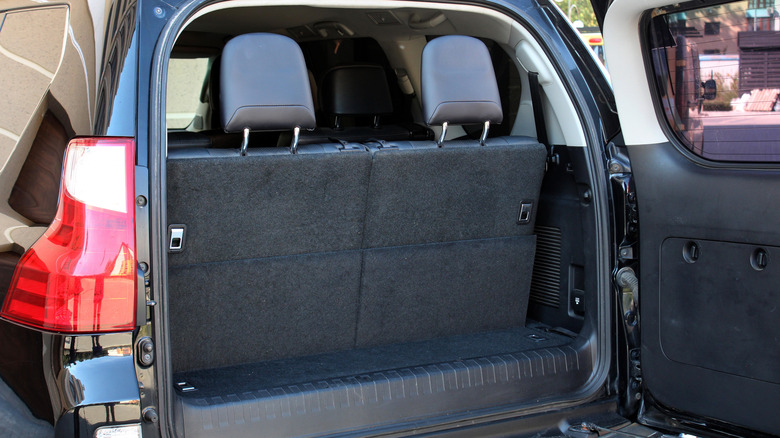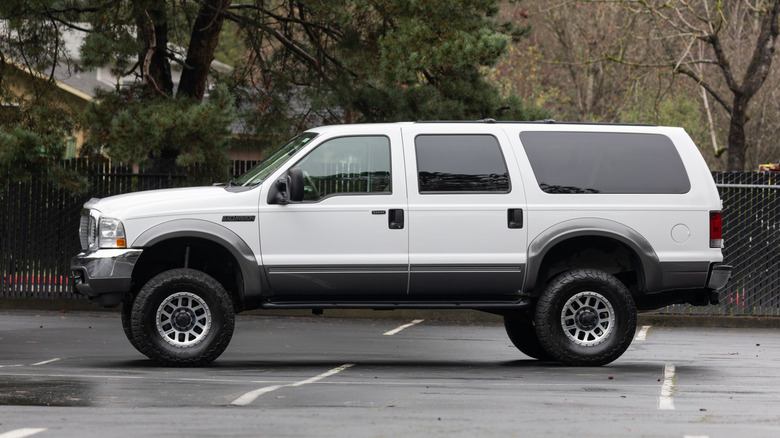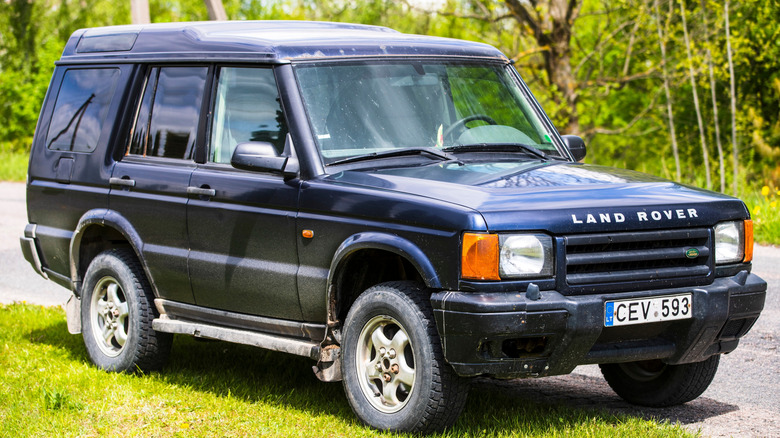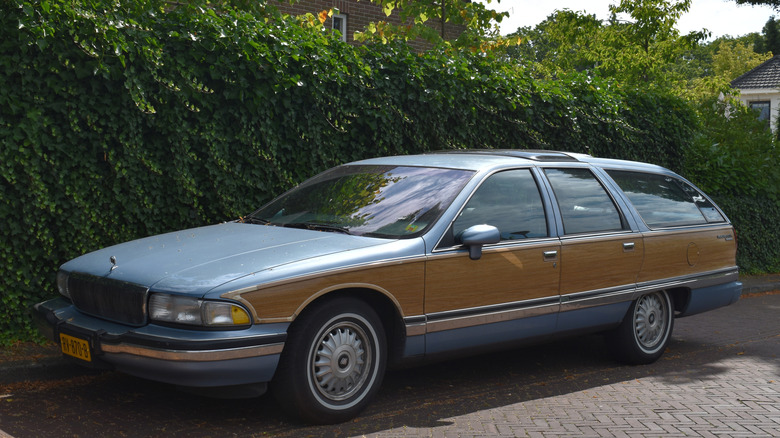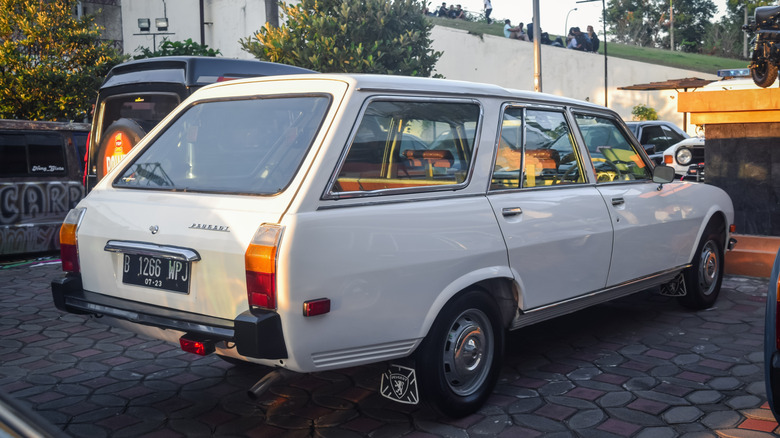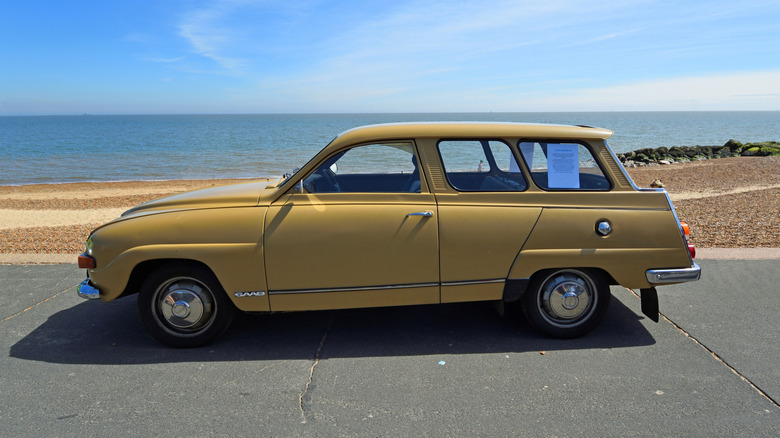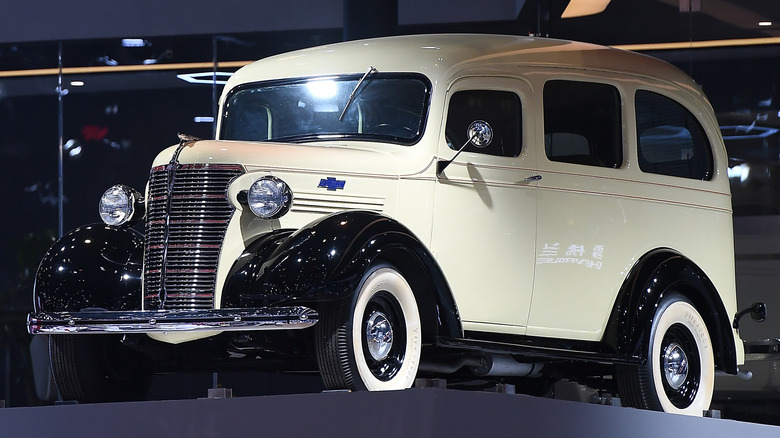6 Classic Cars That Featured Third-Row Seating
The demand for big vehicles has soared in the U.S. recently, driven by modern families seeking ample cargo space and room for growing households. According to data from the Environmental Protection agency (EPA), sales of SUVs and crossovers overtook those of other segments in 2017. In response, Volkswagen official Jeffrey Lear told ABC News in 2022 that the ID. Buzz electric minivan would have three-row seating. "We know this from doing research," he said. Families want three rows."
Volkswagen isn't the only automaker to answer this demand. From heavyweights like the 2025 Ford Explorer and Chevrolet Suburban to sleek newcomers like the Mazda CX-90 and Kia Telluride, buyers today are spoiled for choice when it comes to vehicles with three rows of seating.
In decades past, three-row seating was far less common. In the 1990s especially, this feature was largely confined to station wagons and a handful of minivans. Three-row seating had limited market appeal then, so most manufacturers were hesitant to gamble on configurations that would compromise cargo space or fuel efficiency.
Nevertheless, some automakers took the risk and introduced models with three-row seating long before it became a trend. Such vehicles seemingly paved the way for today's family haulers. Let's take a look at six classic cars that dared to offer third-row seating long before this feature became the rage.
Ford Excursion
The Ford Excursion was a behemoth on and off the road. This modern classic heavy-duty SUV was in production between 1999 and 2005 and was based on the Ford F-250 Super Duty truck platform. The third row allowed it to seat up to nine people with the front bench configuration and eight with front bucket seats.
At the time of its launch, the Excursion was one of the biggest SUVs on the road. Its massive size made the Excursion a gas guzzler, with owners reporting an average of 12.2 miles per gallon to Fuelly. It had several engine options, including the 7.3-liter Power Stroke diesel, which produced 275 hp and 525 lb-ft of torque. Owners of 7.3-liter Power stroke engines report average fuel mileage of 14.4 mpg, slightly better than the typical Excursion.
Ford's jumbo-sized SUV excelled in many aspects because of its high stance and large body. For instance, the Excursion could easily ferry as many as nine people through the roughest of terrains while towing up to 11,000 pounds.
Land Rover Discovery Series II
When the first-generation Land Rover Discovery debuted in 1989, it didn't come with third-row seating. Instead, it had side-facing seats at the rear to accommodate two extra passengers. The extra seats folded away for more cargo carrying room, but the fact that they faced each other was bothersome for some people.
In 1998, Land Rover added a proper third row with the launch of the Discovery Series II. The five-door SUV offered a family-friendly design with its now forward-facing extra seating at the back. Land Rover also upgraded the Discovery's interior after recognizing how families at that time craved "greater luxury as well as exceptional capability."
Land Rover positioned the Discovery series as a more capable off-roader with the inclusion of traction control and hill descent control with the new version, which was in production until 2004. The modern Discovery Sport has carried on with the 5+2 seating configuration.
Buick Roadmaster Estate Wagon
Another notable three-row classic from the '90s is the Buick Roadmaster Estate Wagon, which debuted in the U.S. market in 1991. The General Motors-produced station wagon was a large and long rear-wheel drive, body-on-frame vehicle. Due to its length, it was able to seat up to eight people in three rows.
Unlike the Ford Excursion and Land Rover Discovery Series II's third rows, the Roadmaster's extra seats were rear-facing. Occupants of what became known as "the way back" were looking at following traffic, while second-row passengers could spot birds and aircraft through the Vista Panel glass roof.
The three-row Roadmaster wagon — which was in production until 1996 — came with skirted fenders and woodgrain paneling, both carryover styling cues from decades prior. The Roadmaster wagon had actually been around since the late '40s, and the 1953 model made our list of the coolest station wagons to ever hit American roads.
Peugeot 504 Estate
The Peugeot 504 launched in 1968 in several variants: sedan, wagon, convertible, coupe, and pickup truck. Two years later, Peugeot decided to add an extra row of seats to the wagon and include a fifth door. Thus, the Peugeot 504 Estate — also known as the Familiale — was born. The third row added two seats to what was originally a car that could carry five passengers.
To accommodate the additional seats and expansive boot, the 504 Estate had a longer wheelbase than previous versions. It also had a solid rear axle, so it did not offer a comfortable ride over bumpy roads and other rough terrain. Nevertheless, the added seating made it practical as a family car. Though no specific figures for the station wagon variant are available, more than 3.7million 504s were built before the last one came off the line in 2005.
It's worth noting that the Peugeot 504 was designed by renowned Pininfarina designer Aldo Brovarone, who was well-known for designing sports cars for the likes of Ferrari and Alfa Romero.
Saab 95
Not to be confused with the Saab 9-5 midsize sedan that was introduced in 1997, the Saab 95 was a station wagon that came out in 1959 and lived through the late '70s. It was a distinctive seven-seater that stood out because of its innovative design and clever use of space. It only had two doors, but its unique body shape provided ample headroom for all passengers, including the two in the third row.
The Swedish manufacturer designed the additional bench seat at the back to be versatile. The rear-facing third row could be neatly stowed away into the boot floor when not in use. Users also had the option to fold down both the second and third rows for a more spacious cargo area that could haul more than 1,100 pounds of gear.
The seven-seater was discontinued in 1976, but the five-seat version stayed in production through 1978. By that point, 110,527 of the wagons had been produced.
1935 Chevrolet Suburban
The first-generation Chevrolet Suburban was a pioneering vehicle for more than its three-row seating. Initially called the Carryall Suburban when it debuted in 1935, this classic offered an innovative solution for families and businesses who wanted a durable people hauler. The first-gen Suburban provided seating for up to eight people in a three-two-three seating configuration. It was based on the Chevrolet pickup truck chassis and featured a tough all-steel body; a significant departure from the wooden construction of most vehicles at the time.
The original Suburban launched with a price of $675 (about $15,500 today) as a two-door wagon with the choice of a barn door or split tailgate in back. The tailgate featured a lift-up top section and a bottom piece that could be lowered and used as a bench. The first-gen Suburban's 60-horsepower, six-cylinder engine made it a very capable transporter for people until it was updated in 1940.
The Suburban helped establish the SUV segment as we know it today, and its run of 90-plus years makes it the longest continuously-produced model in automotive history. Fun fact: Since 1960, the Suburban has appeared in over 1,750 films, including at least one each year. Because of this, it became the first inanimate object — and as of this writing the only vehicle — to earn a star on the Hollywood Walk of Fame.
